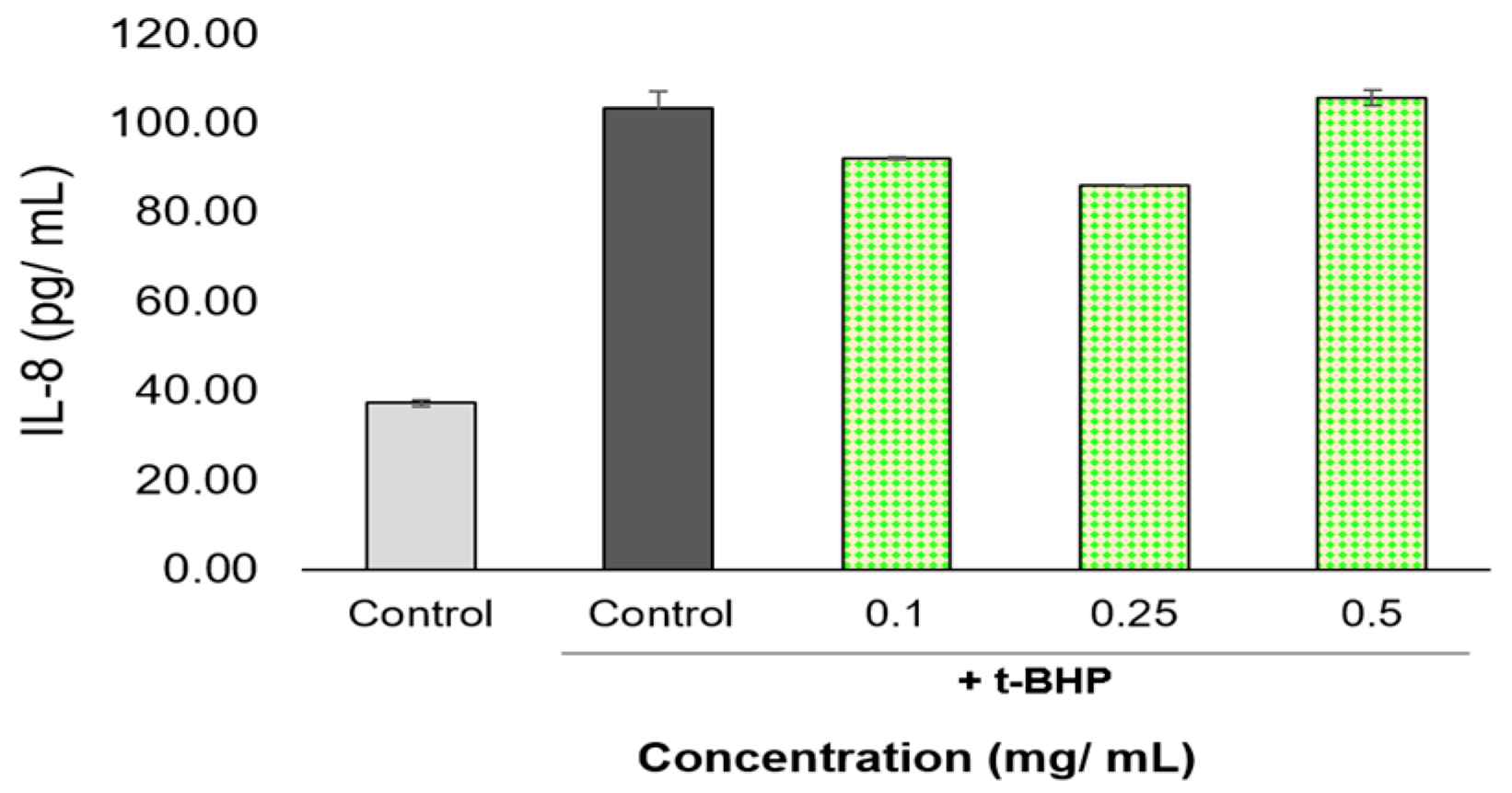Anti-Inflammatory and Antioxidant Activity of Aloe Vera Extract in Immortalized Human Keratinocytes HaCaT †
Author Contributions
Funding
Institutional Review Board Statement
Informed Consent Statement
Data Availability Statement
Conflicts of Interest
References
- Shedoeva, A.; Leavesley, D.; Upton, Z.; Fan, C. Wound healing and the use of medicinal plants. Evid. Based Complement. Alternat. Med. 2019, 2019, 2684108. [Google Scholar] [CrossRef]
- Harinatha Reddy, A.; Sri Lakshmi, B.; Nageswari, G.; Shobha, R.; Venkatappa, B. Phytochemical screening, TLC fingerprinting and antimicrobial activity of methanolic leaf extract of Aloe vera against clinical isolates of methicillin resistant Staphylococcus aureus. Mintage J. Pharm. Med. Sci. 2015, 5, 16–18. [Google Scholar]

Disclaimer/Publisher’s Note: The statements, opinions and data contained in all publications are solely those of the individual author(s) and contributor(s) and not of MDPI and/or the editor(s). MDPI and/or the editor(s) disclaim responsibility for any injury to people or property resulting from any ideas, methods, instructions or products referred to in the content. |
© 2024 by the authors. Licensee MDPI, Basel, Switzerland. This article is an open access article distributed under the terms and conditions of the Creative Commons Attribution (CC BY) license (https://creativecommons.org/licenses/by/4.0/).
Share and Cite
Iosageanu, A.; Craciunescu, O.; Mihai, E.; Seciu-Grama, A.-M.; Stefan, L.M.; Cîmpean, A. Anti-Inflammatory and Antioxidant Activity of Aloe Vera Extract in Immortalized Human Keratinocytes HaCaT. Proceedings 2023, 90, 44. https://doi.org/10.3390/proceedings2023090044
Iosageanu A, Craciunescu O, Mihai E, Seciu-Grama A-M, Stefan LM, Cîmpean A. Anti-Inflammatory and Antioxidant Activity of Aloe Vera Extract in Immortalized Human Keratinocytes HaCaT. Proceedings. 2023; 90(1):44. https://doi.org/10.3390/proceedings2023090044
Chicago/Turabian StyleIosageanu, Andreea, Oana Craciunescu, Elena Mihai, Ana-Maria Seciu-Grama, Laura Mihaela Stefan, and Anișoara Cîmpean. 2023. "Anti-Inflammatory and Antioxidant Activity of Aloe Vera Extract in Immortalized Human Keratinocytes HaCaT" Proceedings 90, no. 1: 44. https://doi.org/10.3390/proceedings2023090044
APA StyleIosageanu, A., Craciunescu, O., Mihai, E., Seciu-Grama, A.-M., Stefan, L. M., & Cîmpean, A. (2023). Anti-Inflammatory and Antioxidant Activity of Aloe Vera Extract in Immortalized Human Keratinocytes HaCaT. Proceedings, 90(1), 44. https://doi.org/10.3390/proceedings2023090044






